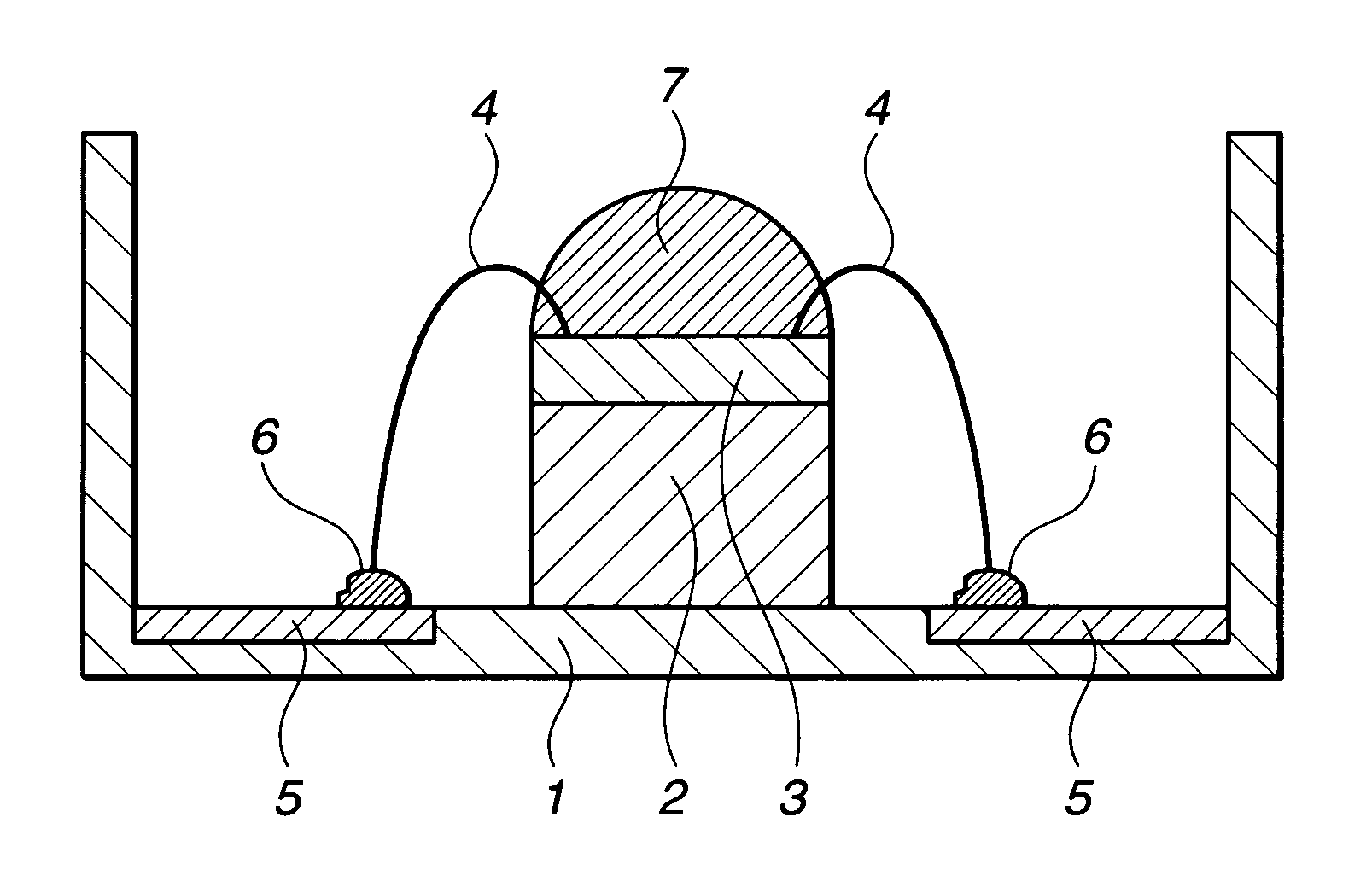Method of removing sealant used for the protection of electric or electronic part
a technology for sealing and electric parts, applied in the direction of cleaning using liquids, instruments, chemistry apparatus and processes, etc., can solve the problems of undesirable or difficult use of these chemicals in the intended application, and the sensitivity of electronic parts to corrosion or dissolution
- Summary
- Abstract
- Description
- Claims
- Application Information
AI Technical Summary
Benefits of technology
Problems solved by technology
Method used
Image
Examples
example 1
[0031]An electronic part as shown in the cross-sectional view of FIG. 1 was used. In FIG. 1, a glass pedestal 2 having a silicon semiconductor device 3 rested thereon is disposed within a polybutylene terephthalate (PBT) package 1. The semiconductor device 3 is connected to nickel-plated insert pins 5 via aluminum bonding wires 4 and solder pads 6. The top of the semiconductor device 3 is encapsulated with a sealant 7 in the form of a fluoroelastomer gel SIFEL 8070 from Shin-Etsu Chemical Co., Ltd.
[0032]The electronic part was immersed in hexafluoro-m-xylene, which was heated at 60° C. for one hour. The electronic part was taken out, then immersed in a tetrahydrofuran / hexafluoro-m-xylene (1 / 1 by volume) solution of 1 mol / L tetrabutylammonium fluoride, which was heated at 60° C. for 30 minutes. The electronic part was taken out, washed with hexafluoro-m-xylene and tetrahydrofuran, and dried.
[0033]Through the above procedure, only the fluoroelastomer gel as the sealant was removed whi...
example 2
[0034]The procedure of Example 1 was repeated except that a ethanol / hexafluoro-m-xylene (1 / 2 by volume) solution of 1 mol / L tetramethylammonium hydroxide was used as the dissolving liquid.
[0035]Only the fluoroelastomer gel as the sealant was removed while the components of the electronic part remained intact and ensured electrical normal operation.
PUM
| Property | Measurement | Unit |
|---|---|---|
| contact time | aaaaa | aaaaa |
| boiling point | aaaaa | aaaaa |
| dissolving | aaaaa | aaaaa |
Abstract
Description
Claims
Application Information
 Login to View More
Login to View More - R&D
- Intellectual Property
- Life Sciences
- Materials
- Tech Scout
- Unparalleled Data Quality
- Higher Quality Content
- 60% Fewer Hallucinations
Browse by: Latest US Patents, China's latest patents, Technical Efficacy Thesaurus, Application Domain, Technology Topic, Popular Technical Reports.
© 2025 PatSnap. All rights reserved.Legal|Privacy policy|Modern Slavery Act Transparency Statement|Sitemap|About US| Contact US: help@patsnap.com



